
Anatomy might sound like some heavy biology topic, but once you break it down, it all makes sense. It’s basically the study of how living things are built and how their parts work together - from the bones that give shape to your body to the nervous system that keeps everything in sync.
This blog covers what is anatomy, the types of anatomy, important human anatomy diagrams like the heart diagram, digestive anatomy diagram, human skeleton diagram, diagram of the eye, and more - all explained in a super student-friendly way so you actually get it.
Anatomy is basically the study of how living things are built and organised. Instead of looking at everything as a jumble of parts, anatomy breaks it down - showing where each part is and how it works together to keep the body functioning. It’s like having the blueprint of a living organism.
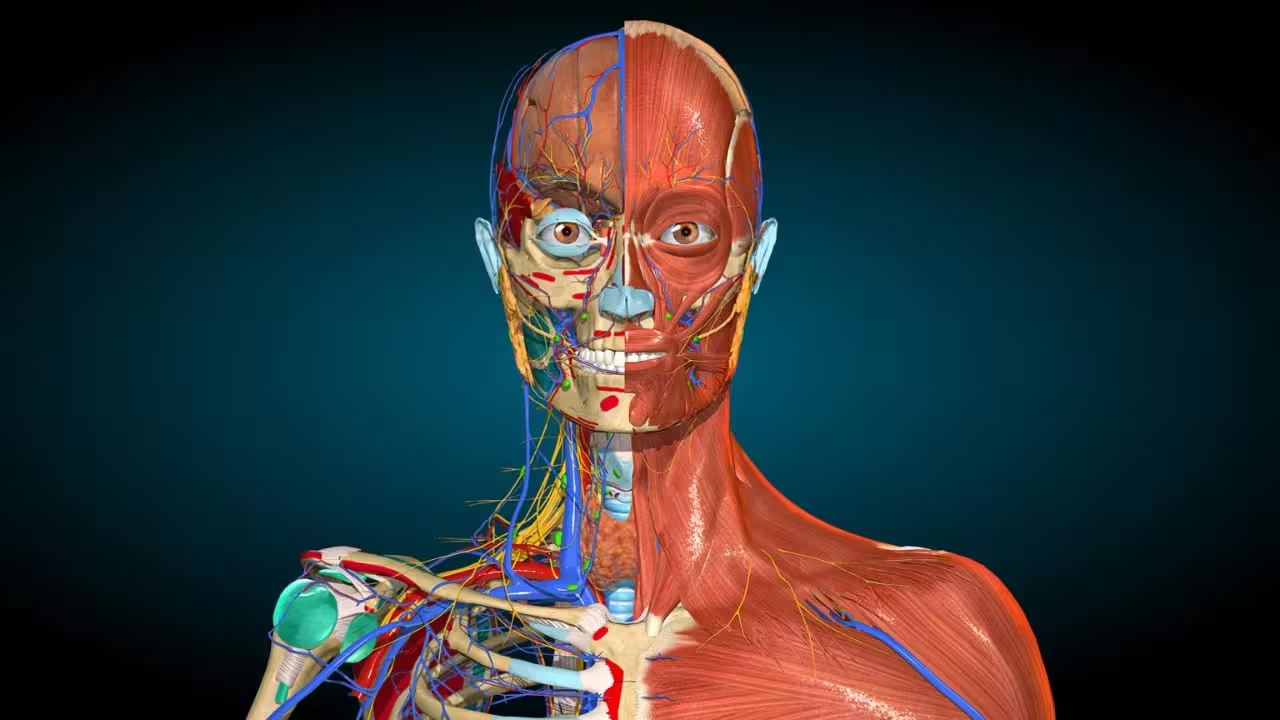
Think of it like exploring a city. Without a map, you’d be lost - not knowing where the roads, buildings, or power lines are. Anatomy is that map for living beings, helping us navigate the complex design of life.
Why it’s important:
In simple terms: Anatomy is the map of life, showing the structure of living beings so we can understand how they work, survive, and thrive.
Anatomical plan and terminology is basically the backbone of anatomy - a universal language that lets scientists, doctors, and students describe the body without confusion. Without it, there’d be chaos in anatomy books, diagrams, labs, and surgeries.
Here’s what it covers:
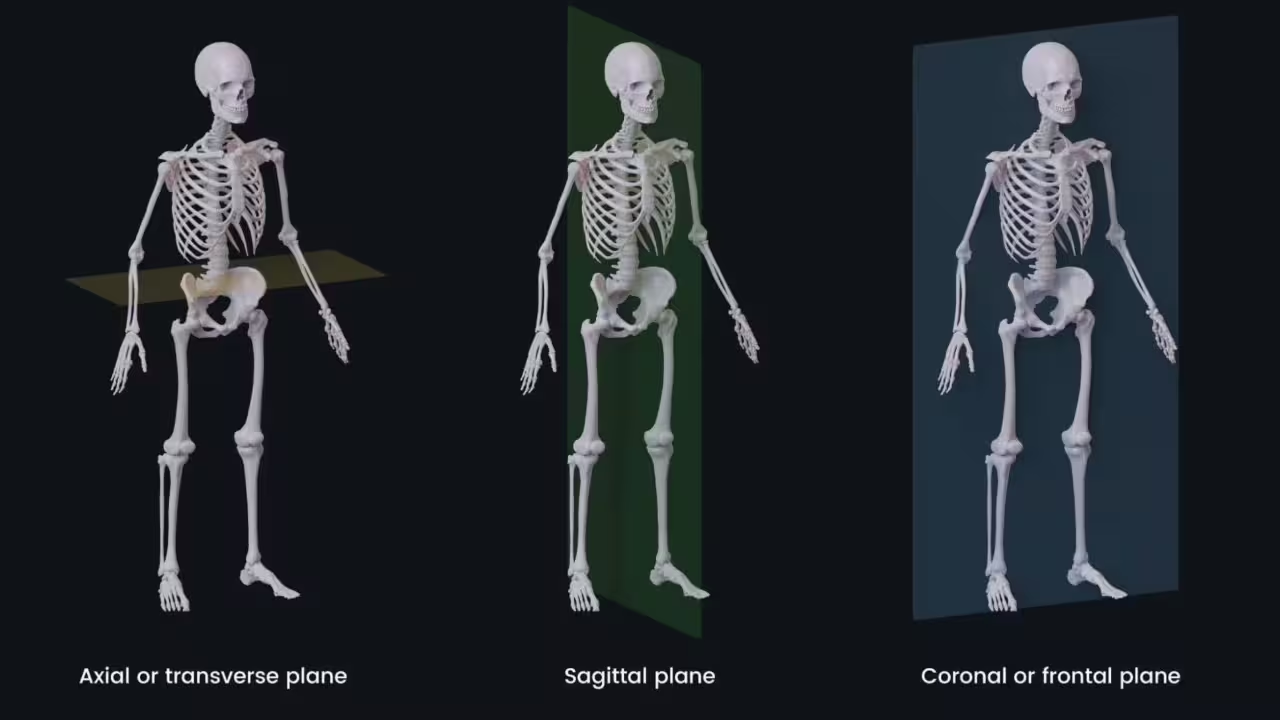
1. Anatomical Position and Planes
The anatomical position is the standard reference point in anatomy: standing upright, facing forward, feet together, arms at sides, palms facing forward. From this position, anatomists divide the body into planes so structures can be studied systematically:
These planes are vital for imaging techniques like MRI and CT scans.
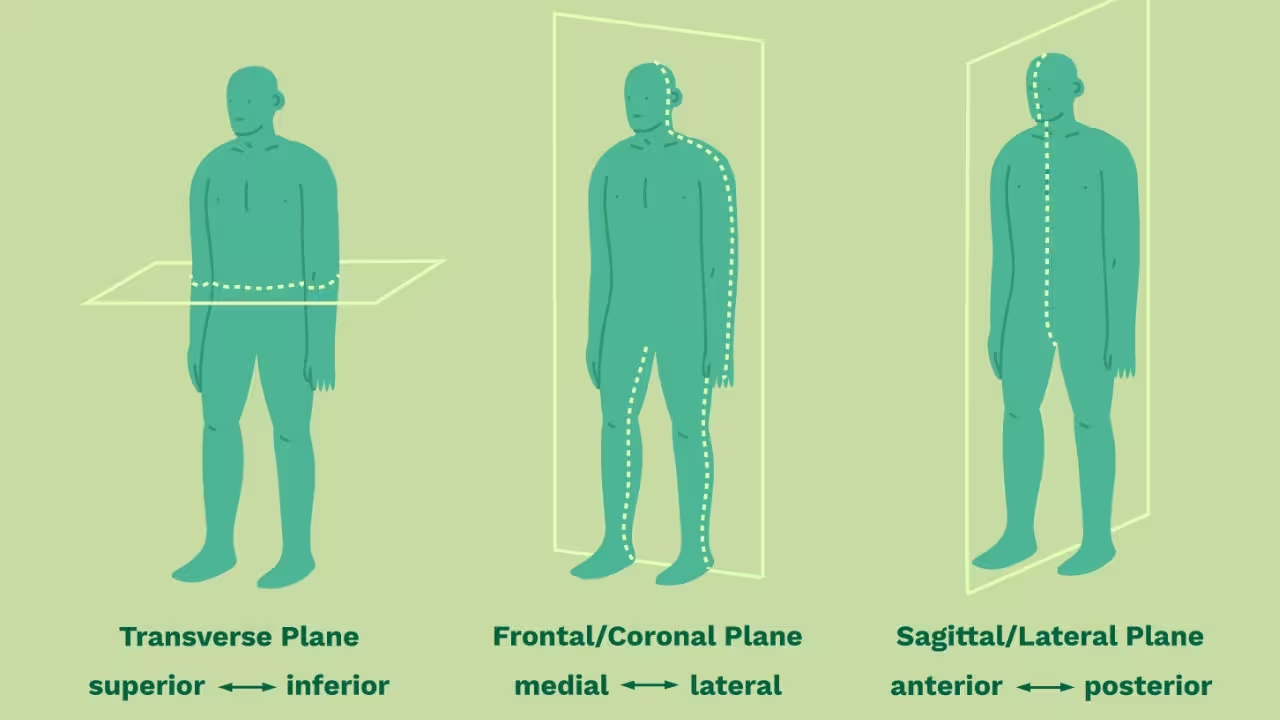
2. Directional Terms
Directional terms help locate structures in the body precisely:
Example: The elbow is proximal to the wrist because it’s nearer to the shoulder.
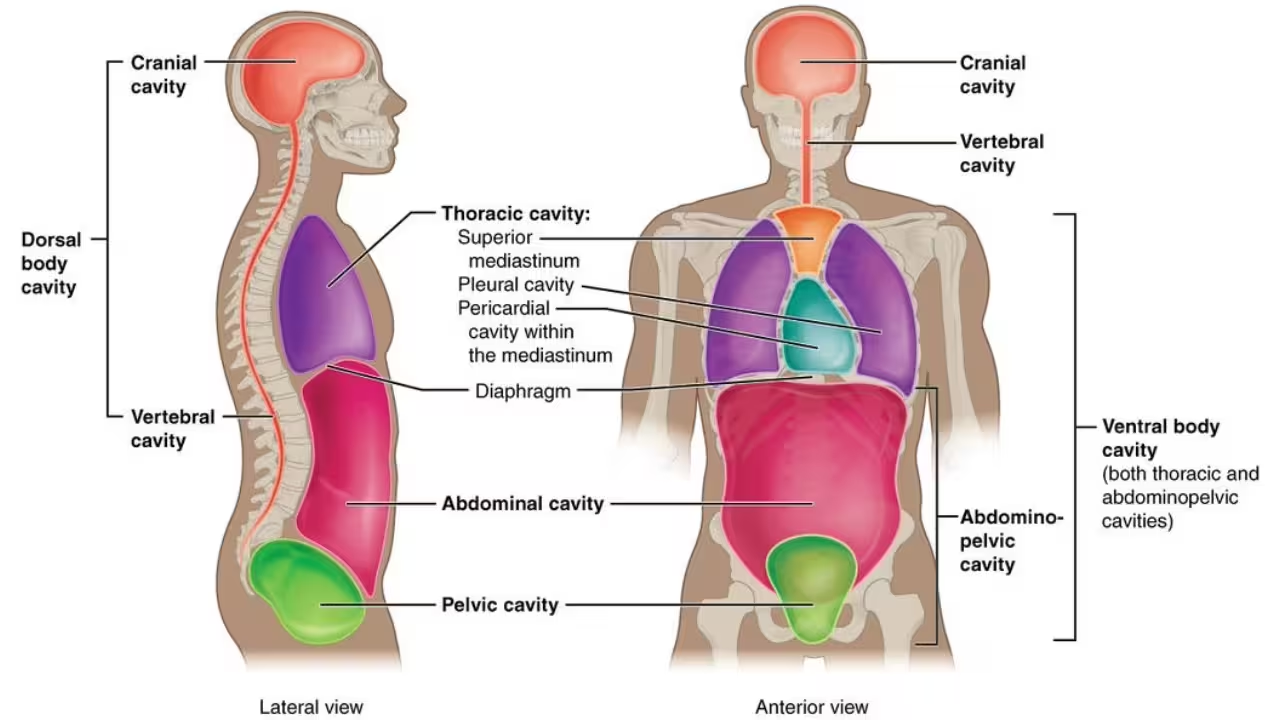
3. Body Cavities and Regions
Cavities protect organs and allow movement without friction:
These cavities are lined with membranes that provide cushioning and reduce wear and tear on organs.
.avif)
4. Structural Levels of Organisation
The body is built in an organised hierarchy: Cells → tissues → organs → organ systems → organism
This organisation is what allows living beings to function efficiently and adapt to changing environments.
.avif)
5. Anatomical Terminology in Diagrams and Dissection
Using standard anatomical terms is essential so everyone - from doctors to students - interprets diagrams, images, and dissections in the same way. This reduces mistakes in medical practice and research.
Anatomical plans and terminology aren’t just definitions - they’re the foundation for understanding how the body is built, studied, and cared for.
Human anatomy is all about the organ systems that work together to keep you alive and kicking. Each system has a unique role, but none of them work alone - your body is like a perfectly synced orchestra where every instrument matters. Let’s quickly break them down one by one.
.avif)
The skeletal system is your body’s hard framework. With 206 bones in adults, it not only gives shape but also protects vital organs and provides points where muscles attach. Joints keep the skeleton flexible, making movements possible.
Muscles are what turn your skeleton into a moving machine. From lifting a pen to running a marathon, muscles provide the force behind every action. There are three types: skeletal, smooth, and cardiac.
Your heart and blood vessels make up a delivery system that carries oxygen, nutrients, and hormones all around the body. It also picks up waste products to dispose of them.
The nervous system is like your body’s command HQ. It detects what’s happening inside and outside, then tells the body how to respond.
From the first bite to the last nutrient absorbed, the digestive system breaks down food into energy and building blocks.
This system brings oxygen in and takes carbon dioxide out. Without it, cells can’t make energy.
To keep the body balanced, the excretory system removes extra water, salts, and urea.
This system ensures survival of the species by producing offspring.
Hormones are chemical signals, and the endocrine glands are their producers. They regulate growth, metabolism, mood, and more.
This is your body’s outer defense system. Skin is the largest organ and acts like armor against the outside world.
Together, these systems keep you safe from infections and help maintain fluid balance.
Think of comparative anatomy like comparing different phone models. Sure, they all do the same basic thing - but the design, features, and systems vary. Same with animals: they all survive, eat, breathe, and reproduce, but the way they’re built can be totally different.
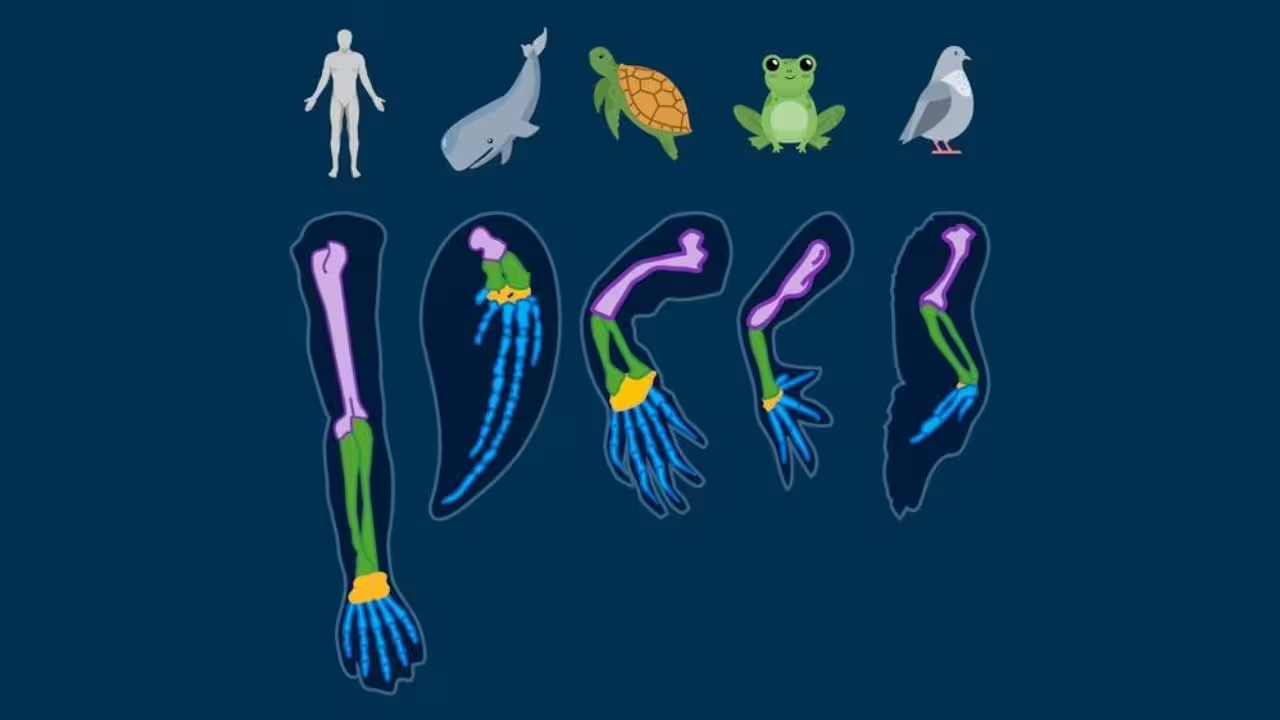
Here’s the fun part - nature has given each species its own “body plan” based on lifestyle and environment:
1. Vertebrates vs. Invertebrates
Vertebrates have a backbone - think mammals, birds, reptiles. Invertebrates (like insects or jellyfish) don’t. That difference changes how their body works entirely.
2. Nervous System Variations
Some animals have a brain as the main control center, while others rely on clusters of nerve cells (ganglia). Example: octopuses have amazing brains, while starfish have nerve rings without a central brain.
3. Respiratory Adaptations
Fish have gills, mammals have lungs, and insects use tracheae. Each system evolved to match the animal’s habitat - water, air, or both.
4. Circulatory Systems
Open systems (like in insects) let blood flow freely in body cavities. Closed systems (like in humans) keep blood in vessels for faster, more efficient transport.
5. Digestive Differences
Herbivores have long, complex digestive tracts to break down plant matter, while carnivores have shorter ones for easier protein digestion.
6. Locomotion Adaptations
Birds have wings, fish have fins, and mammals have limbs - all designed to suit how they move and survive.
Comparative anatomy is nature’s way of showing us the creativity of evolution. By studying these differences, we not only understand animals better but also get insights into how life adapts over time.
Histology is the study of tissues under a microscope. Instead of looking at the big picture like in gross anatomy, histology zooms right in to check the structure of cells and tissues. It’s like inspecting a building brick by brick to understand how it’s made.
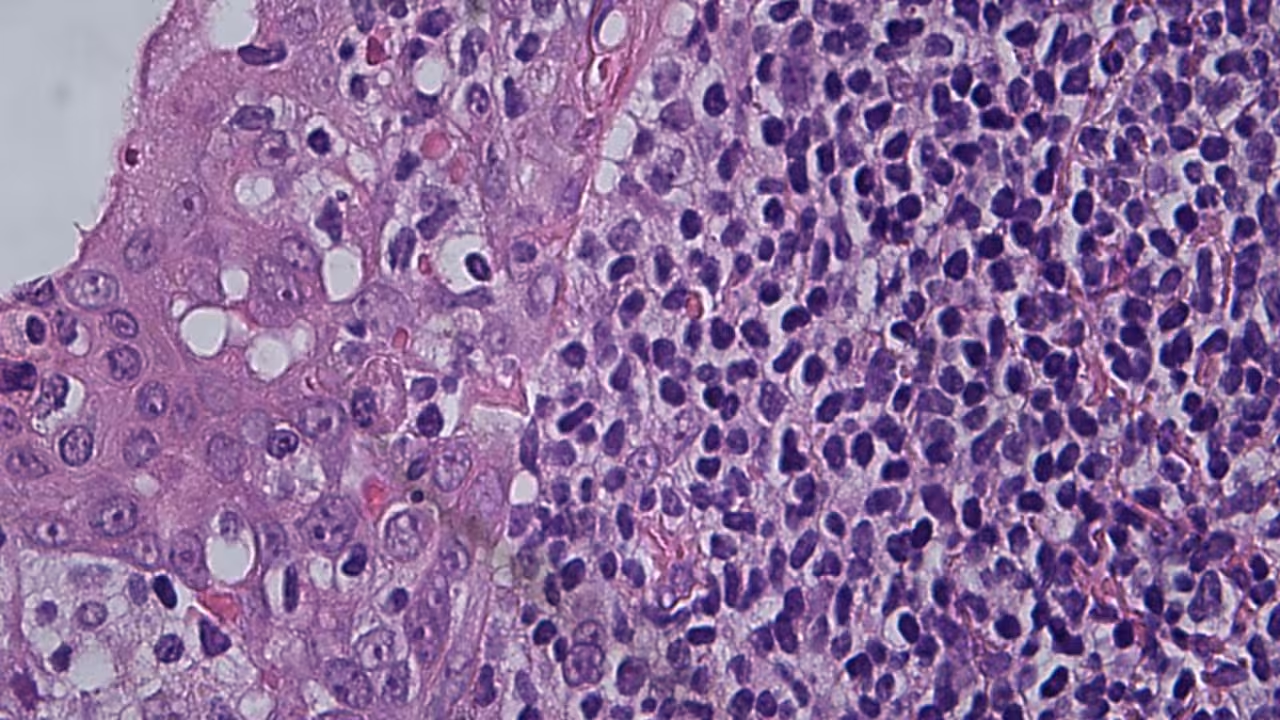
Why it’s important: Every organ in the body - whether it’s your heart, lungs, or skin - is made of specialized tissues. How those tissues are built determines how well the organ works. Histology helps scientists and doctors understand normal tissue structure and spot changes caused by diseases.
Key points:
Histology is the science that reveals the tiny details of the body’s architecture. It’s essential because it connects what you see with the naked eye to the microscopic workings that keep life going.
Gross anatomy is the part of anatomy you can actually see with your naked eyes. No microscope needed. It’s about the bones, muscles, heart, lungs, brain - all the organs and structures you can study directly.
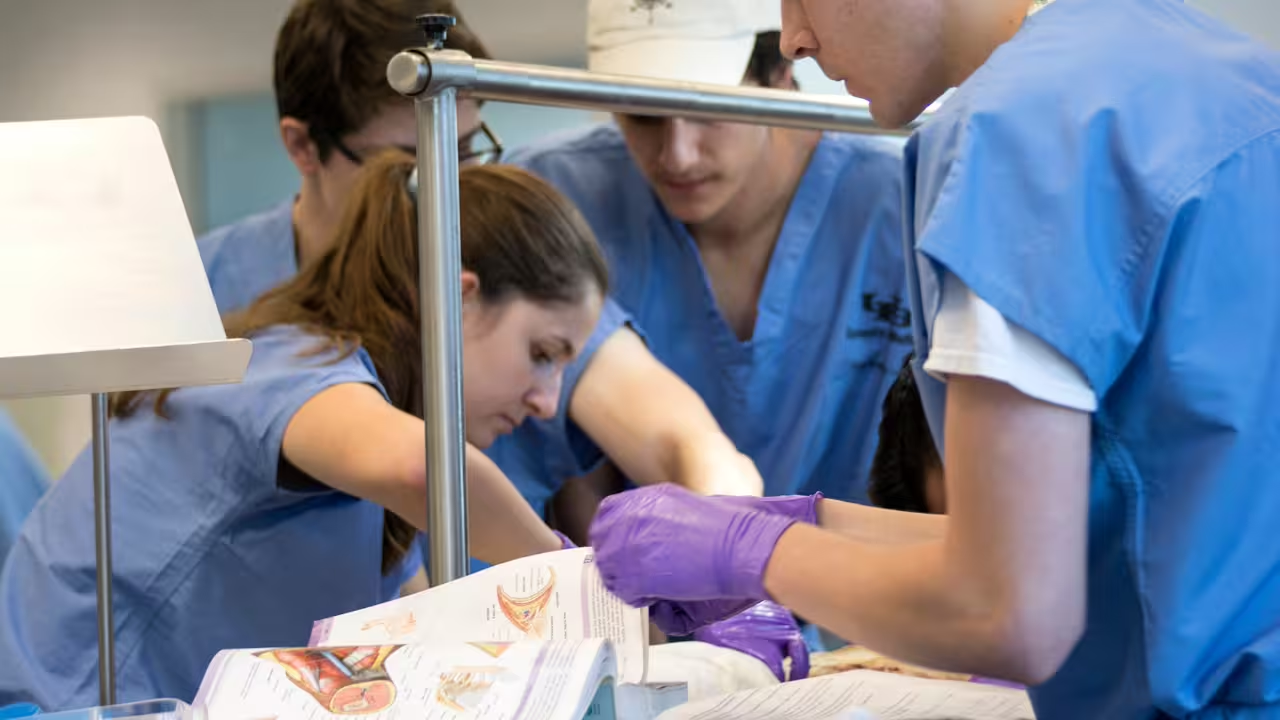
There are two common ways it’s studied:
Why it matters:
So, think of gross anatomy as the map of the human body - it helps you locate and understand how everything fits together.
Think of anatomy as the body’s instruction manual. Without it, we’d all be guessing how things inside us actually work. Here’s why it matters:
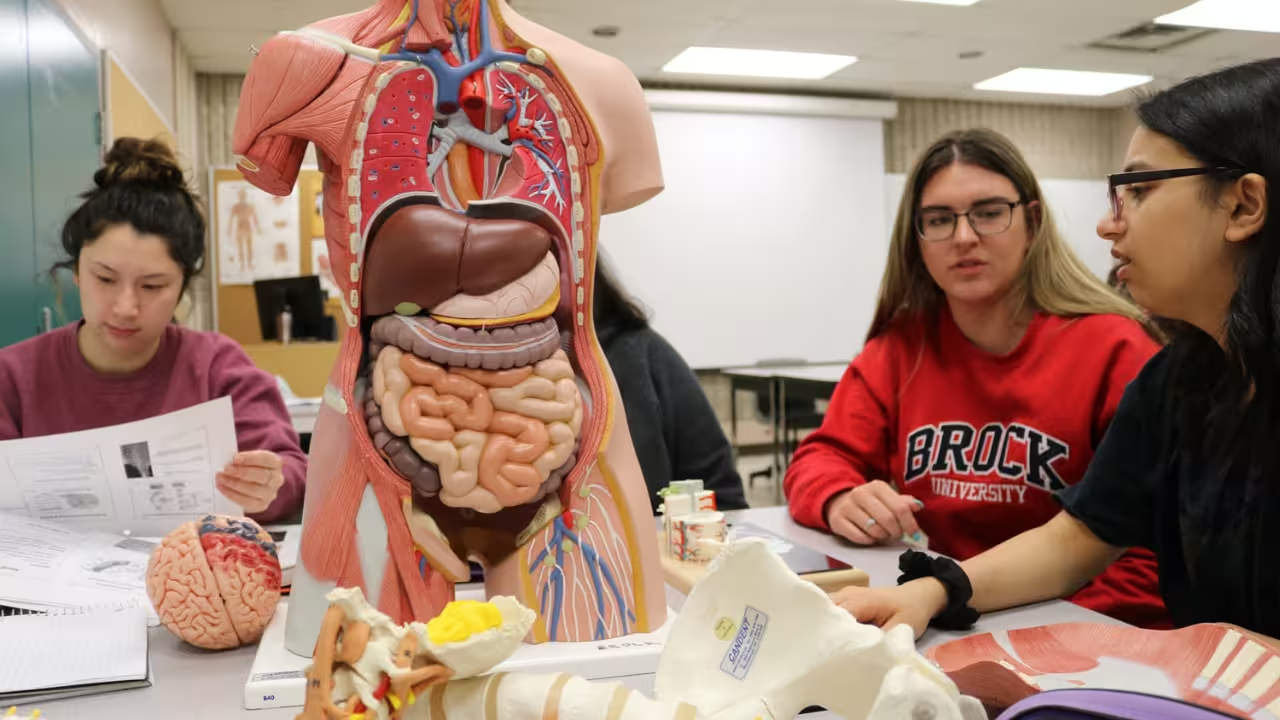
1. Health & Medicine – Doctors don’t magically know where to cut during surgery or which organ is failing. They rely on anatomy to locate structures, understand how systems connect, and treat patients safely.
2. Sports & Fitness – Ever heard of “leg day” at the gym? Trainers and athletes study muscles and joints so they know how to build strength without tearing something. Anatomy is the reason sports science even exists.
3. Everyday Life – Knowing where your stomach or kidneys are isn’t just “science nerd stuff.” It helps you understand why you feel pain in a certain spot or how medicines actually target specific organs.
4. Forensics & Research – From solving crimes to studying evolution, anatomy is the base. It explains how humans differ from animals, why some creatures have gills while others have lungs, and even how injuries can reveal a cause of death.
Anatomy is everywhere. It’s not just a subject in your textbook - it’s what connects biology, medicine, sports, and even daily health awareness.
Anatomy is not just theory - it’s what makes medicine possible. Every disorder you hear about connects back to some structure in the body. If you know the “map” (anatomy), you can understand why these disorders happen and how doctors fix them.
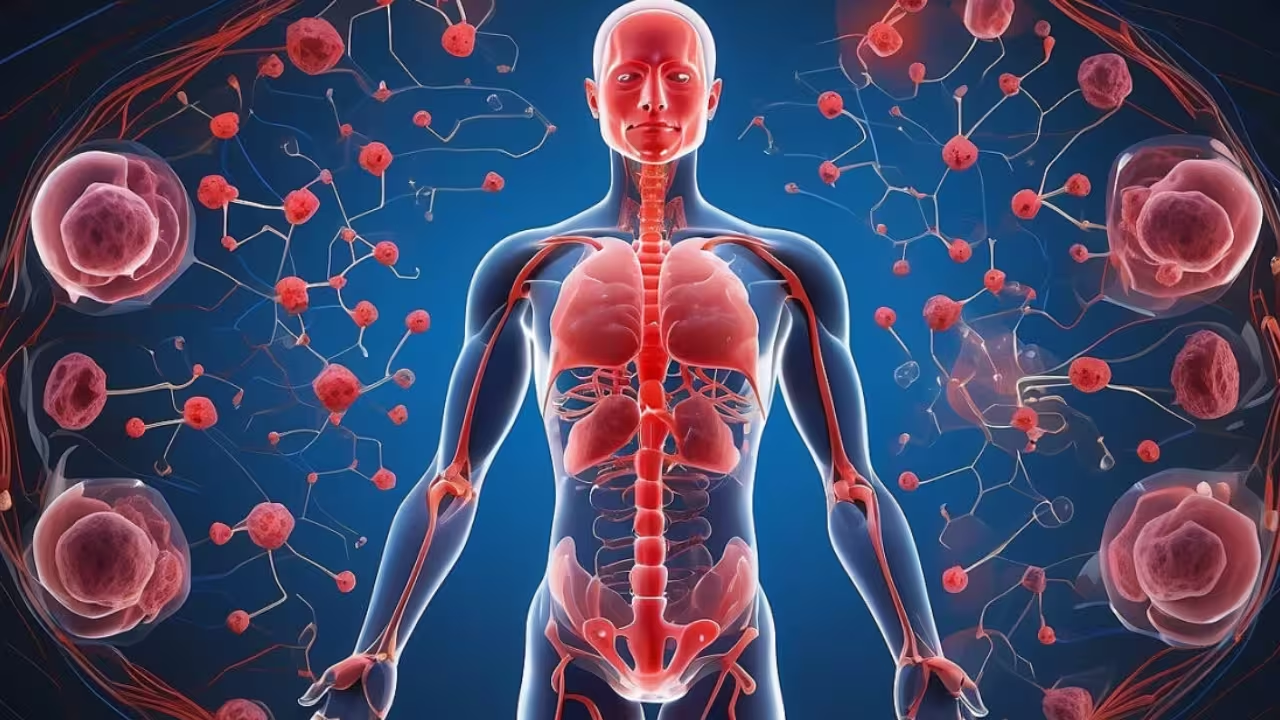
1. Cardiovascular Disorders (Heart & Vessels)
2. Nervous System Disorders
3. Digestive Disorders
4. Musculoskeletal Disorders
5. Respiratory Disorders
6. Clinical Relevance

Q1. What are the different types of human anatomy?
Ans. Human anatomy is divided into different branches so we can study the body in detail without getting lost in complexity. Each type focuses on a different level of structure and function.
Main Types:
Why it matters: Understanding these types helps students and doctors focus precisely - whether dissecting a cadaver, reading a medical scan, or learning biology.
Q2. What is the difference between human and animal anatomy?
Ans. Human anatomy is the study of the human body structure, while animal anatomy focuses on different species. Both overlap but differ in design and adaptation.
Key Differences:
Importance: Comparative anatomy reveals evolutionary links and helps in veterinary science, biology, and medicine.
Q3. What are the major body planes in anatomy?
Ans. Body planes are imaginary lines used to divide the body for study, making anatomy less confusing.
Main Body Planes:
Example: MRIs and CT scans often use these planes for cross-sectional views to locate problems precisely.
Q4. How many systems are there in the human body?
Ans. There are 11 major organ systems that work together to keep the body alive and functioning.
The Systems:
1. Skeletal
2. Muscular
3. Circulatory
4. Nervous
5. Digestive
6. Respiratory
7. Excretory
8. Reproductive
9. Endocrine
10. Integumentary
11. Lymphatic & Immune
Why it matters: Each system has a unique job but relies on the others - understanding this helps in medicine, biology, and health studies.
Q5. What is comparative anatomy and why is it important?
Ans. Comparative anatomy compares body structures of different species to find similarities and differences.
Why it matters:
Example: The human arm and a bird’s wing share similar bone structure, even though they function differently.
Q6. What are anatomical terms of direction and location?
Ans. These are universal terms to describe the position of body parts clearly so there’s no confusion.
Common Terms:
Example: The shoulder is proximal to the hand because it’s closer to the trunk of the body.
Q7. What is the anatomical position and why is it used?
Ans. The anatomical position is the standard stance used in anatomy so descriptions are consistent.
Position: Standing upright, feet together, arms at sides, palms facing forward.
Why it matters: It gives a universal reference point so everyone - from students to doctors - describes body parts in the same way.
Q8. How is the anatomy of a frog different from a human?
Ans. Frog anatomy is adapted to both water and land, while human anatomy is designed for upright walking and complex functions.
Key Differences:
Importance: Comparing these anatomies teaches us about evolution, adaptation, and survival strategies.
Q9. What tools or apps are best for studying anatomy?
Ans. There are lots of ways to study anatomy - from books to interactive tools. The key is mixing resources.
Top Tools:
Tip: Use a combination - reading, diagrams, models, and interactive apps - for better understanding.
Q10. How do organs and systems work together in human anatomy?
Ans. No organ works alone - they group into systems, and systems cooperate to keep the body alive and healthy.
Example:
Why it matters: This teamwork explains why a problem in one system can impact the entire body.